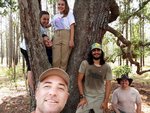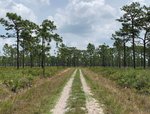A new University of Florida-led study established a Forest Global Earth Observatory (ForestGEO) research plot at the Ordway-Swisher Biological Station...
Join our family of readers for as little as $5 per month and support local, unbiased journalism.
Already have an account? Log in to continue. Otherwise, follow the link below to join.
Please log in to continue |


GAINESVILLE — A new University of Florida-led study established a Forest Global Earth Observatory (ForestGEO) research plot at the Ordway-Swisher Biological Station within a longleaf pine forest. These forests are a focus of restoration efforts because longleaf pine once dominated the southeastern Coastal Plain but only 3% of this forest type remains today. ForestGEO is a network of scientists and sites that are working together to better understand the world’s forest dynamics. This Smithsonian Institution network is comprised of 72 sites in 27 countries.
Researchers within the ForestGEO network use the same methodology to create plots. “The plots become an infrastructure to ask all sorts of questions and to collaborate with other scientists,” said Dan Johnson who led the research and is an assistant professor of silviculture. “The ForestGEO network allows us to compare forests across the world and answer big questions about what is happening to forests in general.”
The new study, published in the journal Forest Ecology and Management, looked at regeneration patterns of the two dominant tree species on the plot. Longleaf pine saplings were more likely to be found in areas dominated by turkey oaks or in forest gaps rather than under mature longleaf pine trees. This positive connection between longleaf pine saplings and turkey oaks suggests that land managers should consider the role of oaks during restoration of longleaf pine forests.
Johnson said “One highlight of this study was that we had both forest and geomatics undergraduate students from the School of Forest, Fisheries, and Geomatics Sciences (FFGS) working together. The geomatics students established the grid of reference points to georeference the trees. The forestry students mapped, measured, and identified the trees.” Faculty and students from both programs were involved in the analysis and writing of the study.
Johnson and a co-author of the study, Eben Broadbent, are both faculty in FFGS and members of ProForest, a multi-institutional collaboration based at UF which has research and extension programs focused on forest health and resilience. Other authors include Lukas Magee, Karun Pandit, Jacqueline Bourdon, Kaylyn Glen, Youssef Kaddoura, Siddarth Machado, Joseph Nieves, Benjamin Wilkinson and Stephanie Bohlman from FFGS and Angélica Almeyda Zambrano from the Center for Latin American Studies at the University of Florida.